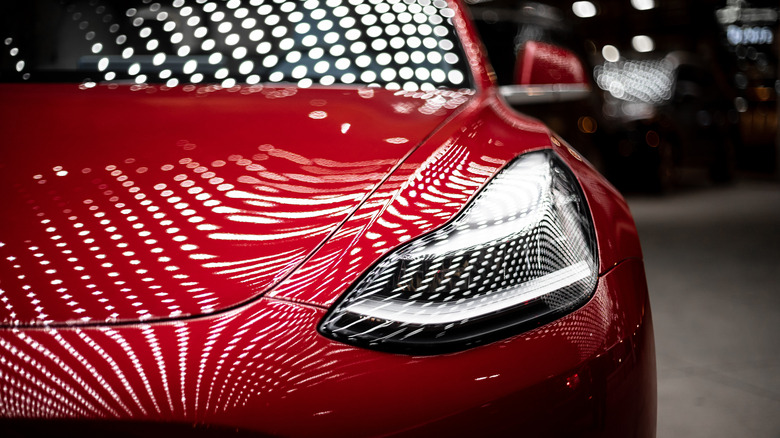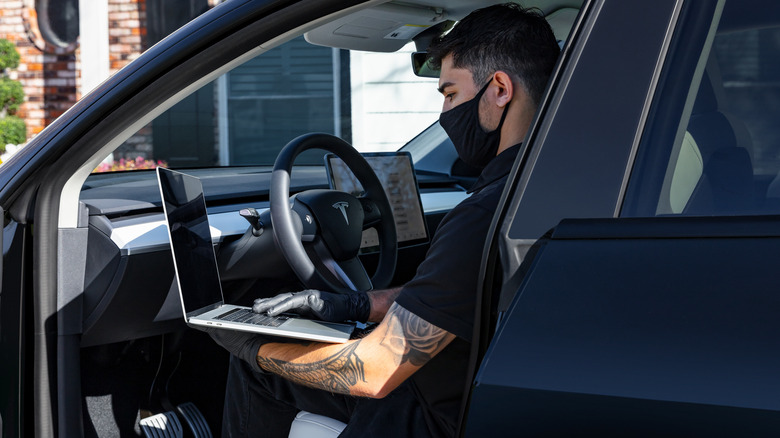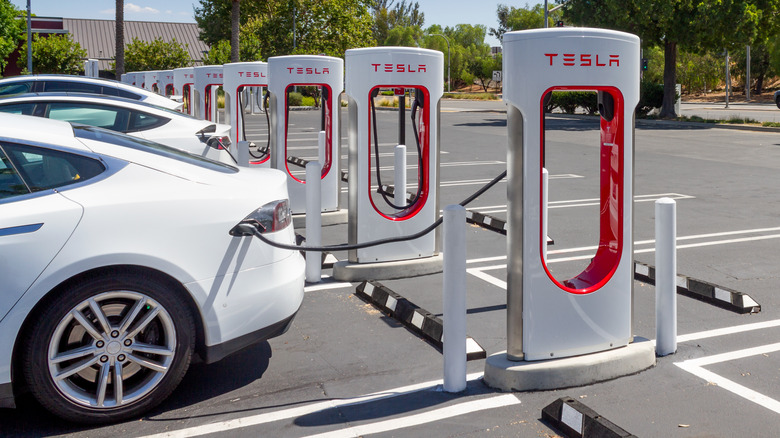Replacing The Battery Pack On A Tesla Model 3 Costs More Than You Think
As the dust of the all-electric innovation storm settles, the real costs of buying, driving, and maintaining an EV become clearer. It's tricky to determine the actual cost of driving an EV, at least when compared to figuring out the costs of driving conventional gas cars. EVs are more expensive than gas cars, they depreciate faster, and the cost of electricity varies from state to state. EV carmakers use cash-upfront tactics to promote the cost of an EV, but usually they are financed, making the buy much heftier.
For example, Tesla lists the costs of an entry-level Model 3 at $47,000, but the average transaction peaks at about $60,000, according to CNET. There is no denying that EVs bring many benefits to the table and that they are the future of mobility. However, the industry — which is seeing all-time high orders — still needs to get the record straight on several issues like meeting demand, building up the EV charging networks, addressing battery performance in cold and hot weather, and finding a way to battle out inflation without transferring the cost to the buyer.
Electric vehicles in 2022, even the most affordable ones, are still expensive when compared to gas cars. According to Kelley Blue Book, the average transaction price for an EV in April 2021 was $51,532, while the average transaction price for a gas compact car is $22,798, and for a gas SUV or crossover, it was $31,033. EV manufacturers argue that down the road, EVs bring generous savings in gas and maintenance — however, there are hidden costs. For example, replacing the battery of a Tesla Model 3 costs one-third of the total price of the car in 2022, as reported by Recurrent.
The lowdown on replacing a Tesla Model 3 battery
Recurrent reports that replacing the battery of a Tesla Model 3 costs about $15,800. That works out to around $180 per kWh, more than the average cost of replacing a Nissan Leaf battery. Compared to hybrids and plug-in hybrids, like the Hyundai Ioniq, the cost per kWh of power is actually fairly competitive for the Model 3. However, because of the sheer size of the battery pack overall — with potentially ten times the kWh count, if not more — that pushes the Tesla's total price up significantly, too. EV battery technology is getting better, more efficient, and cheaper; Bloomberg reports that by 2030, the cost is expected to drop to $100/kWh and possibly as low as $58/kWh. However, new supply chain problems affecting lithium and other elements used in batteries could pause the downward price trend.
Tesla's official limited warranty covers the battery replacement for a Model 3 Rear-Wheel Drive for eight years or 100,000 miles, whichever happens first, with a "minimum of 70% retention capacity over the warranty period." For a Model 3 Long Range version, the warranty is for eight years or 120,000 miles. Tesla may choose to repair the damaged battery or replace it with a new one when executing the warranty. Take note, however, that the automaker warns the replacement may not restore the battery to a "like new" condition. Used Teslas bought through the Tesla inventory have battery replacement covered for four years or 50,000 miles with the original warranty and an addition of one year or 10,000 miles.
The Tesla warranty only covers malfunctions or damages caused by fabrication. If the battery is damaged due to collisions, exposure to fire, water, unauthorized services, improper maintenance, earthquake, windstorm, off-road driving, and several other events, the owner will face the cost. Many drivers who find themselves facing an EV battery replacement that isn't covered by the warranty are choosing alternative methods which can cut costs dramatically.
The easiest way to delay an expensive EV battery replacement
If the thought of potentially spending tens of thousands of dollars on a new Tesla battery fills drivers with horror, the good news is that there are ways to delay that expense. One of the easiest comes down to battery chemistry itself, and not charging your EV all the way up every time. In fact, automakers generally recommend targeting an 80-90% maximum charge for day to day use. Tesla's suggestion is up to approximately 90% — which can be set through the infotainment touchscreen — saving a full 100% charge for those times you're planning a road trip and want maximum range. One of the main reasons for that is the heat produced when an electric vehicle is charging: more heat degrades the battery, so avoiding a complete charge should help keep the eventual replacement at bay.
As for where the used batteries go, that's another area where the auto industry — and its supply chain partners — is improving. Tesla, like several other automakers and specialists, are working on recycling the materials which go into the typical EV power pack, including extracting the rare earth materials which help contribute to its high price tag. They can often be reused, helping reduce the cost of producing new batteries.
In other cases, the whole battery packs themselves get a second life, and that needn't involve wheels at all. While the energy density they can store may not be where it needs to be for efficient motoring, it's often more than enough to act as a backup battery for fixed use. BMW has been using old EV power packs for several years now, for example, acting as temporary storage for energy generated by solar panels at its plant in Leipzig, Germany.


